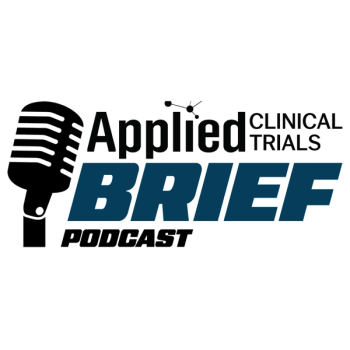Topline Findings
- First Patient Treated: Apreo Health has enrolled the first patient in the pivotal BREATHE-3 trial testing the BREATHE Airway Scaffold for severe emphysema.
- Minimally Invasive Therapy: The self-expanding airway scaffold is designed to reduce lung hyperinflation and improve breathing, daily activity, and quality of life.
- Robust Trial Design: BREATHE-3 will evaluate up to 250 patients over three years, with primary endpoints including Forced Expiratory Volume in 1 second (FEV1) response and key secondary measures, such as six-minute walk distance and pulmonary function.
Apreo Health announced that it has treated the first patient in the BREATHE-3 trial (NCT06891755) evaluating the company’s BREATHE Airway Scaffold. The minimally invasive, self-expanding implant is designed to reduce lung hyperinflation in patients with severe emphysema who have not responded to standard treatments. Early data from the BREATHE-1 and BREATHE-2 trials showed a 92.4% technical success rate with no cases of pneumothorax.1
Can the BREATHE Airway Scaffold Change Treatment for Severe Emphysema?
“For years, the field has been searching for a safer, more broadly applicable way to address emphysema-related hyperinflation,” BREATHE-3 trial principal investigator Gerard J. Criner, chair, professor, thoracic medicine and surgery, Lewis Katz School of Medicine at Temple University, director, Temple Lung Center, said in a press release. “The BREATHE Airway Scaffold offers a novel approach that allows treatment of the whole lung while eliminating the risk of pneumothorax and procedural complexities that have limited broader adoption of current interventions. This trial is a key step in evaluating a therapy that could meaningfully expand interventional treatment access for patients today who have few options.”
BREATHE-3 Trial Design and Endpoints
- The prospective, randomized, two-arm, parallel-group, concurrently controlled, open-label, multi-center BREATHE-3 trial will evaluate the safety and efficacy of the BREATHE Airway Scaffold in up to 250 patients with emphysema-related lung hyperinflation.
- Patients will be evaluated for up to three years.
- The trial will begin with a Roll-In phase at each participating site, during which up to two patients per site and up to 50 patients overall will be enrolled before the randomized portion of the trial.
- From there, up to 200 patients with bilateral emphysema will be randomly assigned across up to 25 centers in the United States and Europe.
- In the randomized phase, participants will be randomly assigned in a 2:1 ratio to either the treatment or control group.
- Patients in the control group will continue with standard medical management and will have the option to cross over to receive the treatment after one year.
- The primary endpoint of the trial is the proportion of subjects who meet the Forced Expiratory Volume in 1 second (FEV1) Responder criteria, defined as a reduction from baseline in post-bronchodilator FEV1 of ≥12%.
- Key secondary endpoints include, but are not limited to, six-minute walk distance, residual volume responder rate, forced vital capacity responder rate, FEV1 responder rate, and Modified Medical Research Council responder rate.2
Disease Background
- According to the American Lung Association, more than three million people in the United States are currently living with emphysema, with some estimates putting the total prevalence at around 14 million.
- Emphysema is classified as a severe form of chronic obstructive pulmonary disease (COPD).
- COPD is the third-leading cause of death globally, according to a study published by the National Center for Biotechnology Information.
- An estimated 80% to 90% of patients with COPD are current or former cigarette smokers.
- Emphysema cases are gradually rising, driven largely by cigarette smoking and environmental pollution.1,3,4
CEO Perspective
“Treating not only the first patient in our pivotal BREATHE-3 trial, but also the first patient in the United States, marks a defining moment for Apreo and a critical milestone in the path to changing the standard of care for millions of people who’ve been left behind by existing treatment options,” said Karun Naga, CEO, Apreo Health, in the press release. “With this study, we’re advancing a therapy designed to fit the realities of everyday clinical practice, enabling broader use by physicians, and ultimately better outcomes for patients.”
References
- Apreo Health Announces First Patient Treated in BREATHE-3, Pivotal Clinical Trial of Company’s BREATHE Airway Scaffold. BusinessWire. August 14 2025. Accessed August 15 2025. https://www.businesswire.com/news/home/20250814422111/en/Apreo-Health-Announces-First-Patient-Treated-in-BREATHE-3-Pivotal-Clinical-Trial-of-Companys-BREATHE-Airway-Scaffold
- Bronchoscopic RElease of Air Trapped in Hyperinflated Emphysematous Lung - Study 3 (BREATHE-3). Clinicaltrials.gov. Accessed August 15, 2025. https://clinicaltrials.gov/study/NCT06891755?term=BREATHE-3&rank=1
- Emphysema. American Lung Association. Accessed August 15, 2025. https://www.lung.org/lung-health-diseases/lung-disease-lookup/emphysema#:~:text=Key%20Facts%20About%20Emphysema,mucus%2C%20wheezing%20and%20chest%20tightness.
- Emphysema. NIH. Accessed August 15, 2025. https://www.ncbi.nlm.nih.gov/books/NBK482217/





